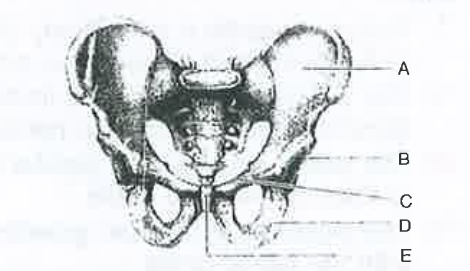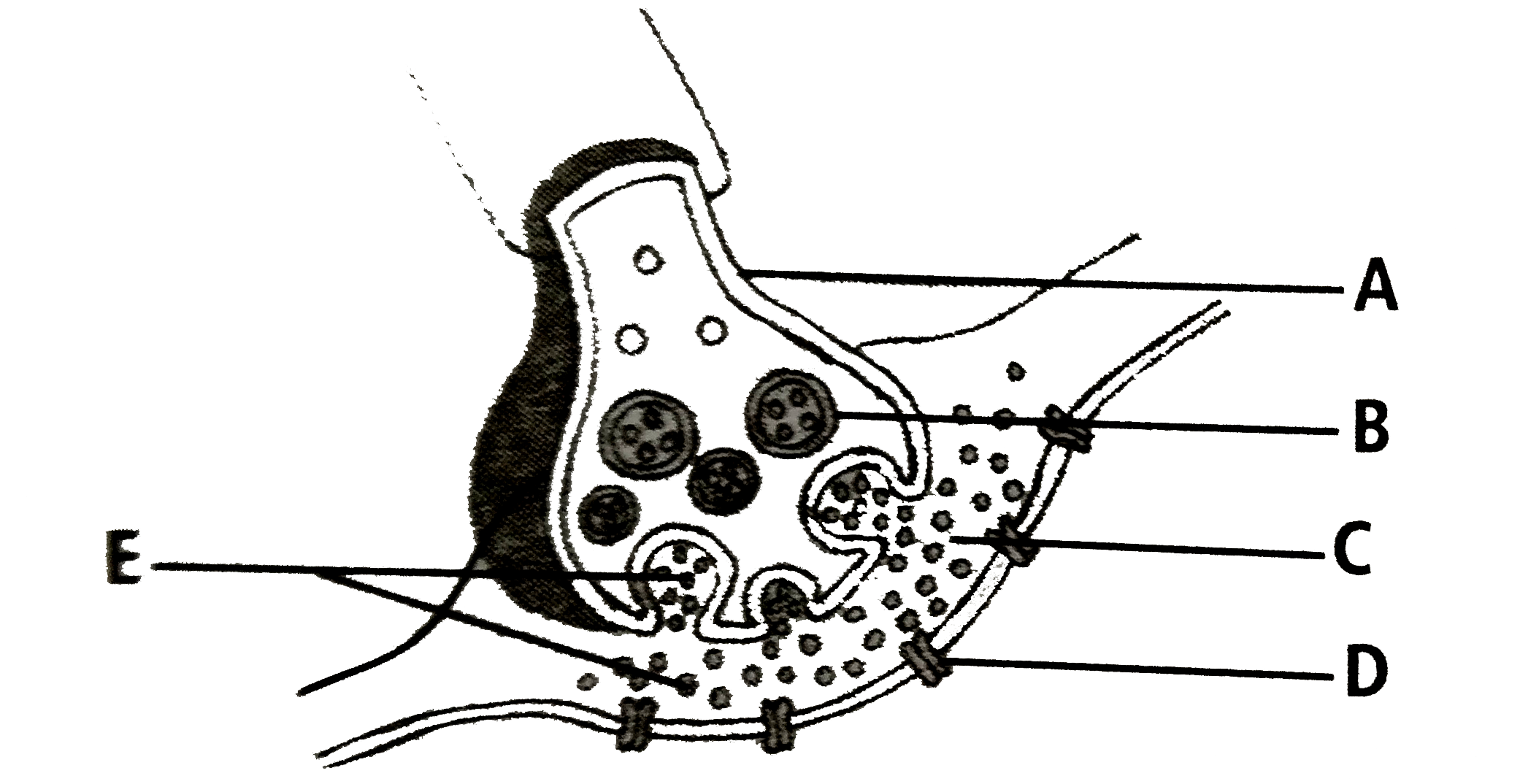In the pelvic girdle of man A,B,C,D and E respectively represent

1)A-Pubis, B-Sacrum, C-Coccyx, D-Acetabulum, E-Pubic symphysis
2) A-Ilium, B-Sacrum, C-Coccyx, D-Acetabulum, E-Pubic symphysis
3)A-Ilium, B-Coccyx, C-Sacrum, D-Acetabulum, E-Pubic symphysis
4)A-Ilium, B-Sacrum, C-Coccyx, D-Pubic symphysis, E-Acetabulum
The correct Answer is:B
Step by step video & image solution for In the pelvic girdle of man A,B,C,D and E respectively represent by Biology experts to help you in doubts & scoring excellent marks in Class 12 exams.
Topper's Solved these Questions
- BOOK - AAKASH SERIESCHAPTER - LOCOMOTION AND MOVEMENTEXERCISE - EXERCISE -II(JOINTS)14videos
LOCOMOTION AND MOVEMENT
- BOOK - AAKASH SERIESCHAPTER - LOCOMOTION AND MOVEMENTEXERCISE - EXERCISE -II(DISORDERS OF MUSCULAR AND SKELETAL SYSTEMS)1videos
LOCOMOTION AND MOVEMENT
- BOOK - AAKASH SERIESCHAPTER - LOCOMOTION AND MOVEMENTEXERCISE - EXERCISE -II(MUSCLE)27videos
LOCOMOTION AND MOVEMENT
- BOOK - AAKASH SERIESCHAPTER - HUMAN REPRODUCTIONEXERCISE - EXERCISE-III55videos
HUMAN REPRODUCTION
- BOOK - AAKASH SERIESCHAPTER - MINERAL NUTRITIONEXERCISE - Exercise - III52videos
MINERAL NUTRITION
Similar Questions
Knowledge Check
- Question 1 - Select One
The given diagram shows axon terminal and synapse. Here A,B,C,D and E respectively represent
 AAxon terminal, Synaptic cleft, Synaptic versicles, Neurotransmitters and ReceptorsBAxon terminal, Synaptic vesicles, Synaptic cleft, Receptors and NeurotransmittersCSynaptic cleft, Synaptic vesicles, Axon terminal, Neurotransmitters and ReceptorsDSynaptic cleft, Axon terminal, Synaptic vesicles, Neurotransmitters and Receptors
AAxon terminal, Synaptic cleft, Synaptic versicles, Neurotransmitters and ReceptorsBAxon terminal, Synaptic vesicles, Synaptic cleft, Receptors and NeurotransmittersCSynaptic cleft, Synaptic vesicles, Axon terminal, Neurotransmitters and ReceptorsDSynaptic cleft, Axon terminal, Synaptic vesicles, Neurotransmitters and Receptors
Pelvic girdle of man consists of
View SolutionPelvic girdle is made up of
View SolutionThe pelvic girdle articulates to
View SolutionABCD is a parallelogram and E and F are the centroids of triangles ABD and BCD respectively, then EF=
(a)AE
(b) BE
(c) CE
(d) DEView SolutionHalf of pelvic girdle is known as
View SolutionIn Fig, if AD, AE and BC are tangents to the circle at D, E and F respectively. Then, (a)AD=AB+BC+CA (b)2AD=AB+BC+CA (c)3AD=AB+BC+CA (d)4AD=AB+BC+CA
View SolutionIf a line intersects sides AB and AC of a ΔABCat D and E respectively and is parallel to BC, prove that ADAB=AEAC
View Solution

